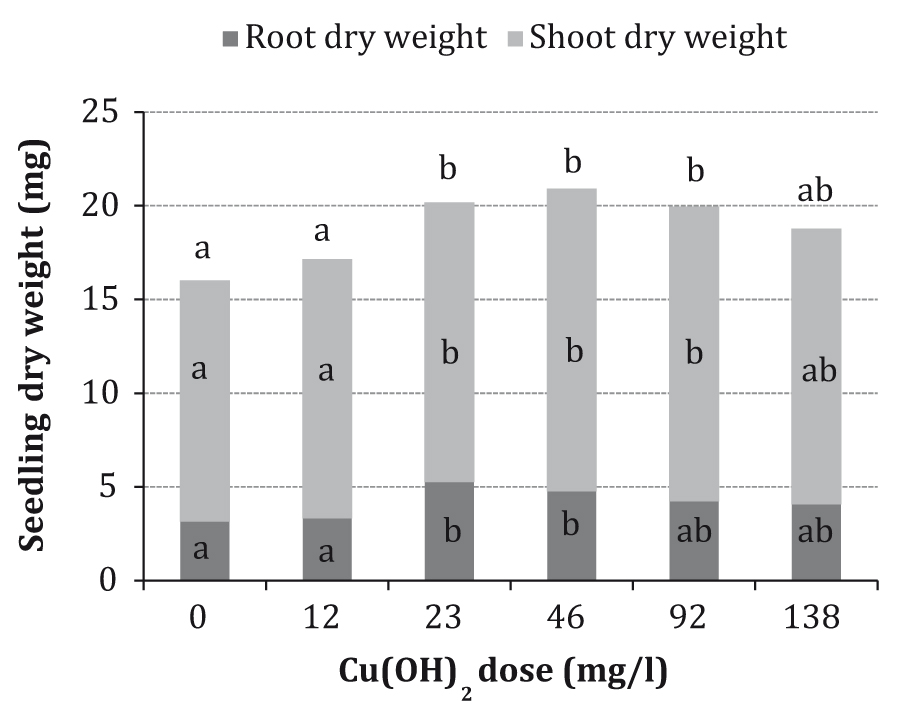Use of copper hydroxide in the cultivation of lisianthus seedlings (Eustoma grandiforum L.) under floating system
Keywords:
floating bed, Eustoma grandiflorum L., chemical pruning, propagationAbstract
Previous experiences demonstrated the efficiency of the floating system for growing lisianthus (Eustoma grandiflorum L.) seedlings. Using this system, root growth usually expands through the plug cell drainage hole into the solution originating some difficulties at transplant. Pruning roots could facilitate transplant as seedlings could be taken out of the tray more easily. However, root damages at the cutting point are a possible access for pathogens. The use of Cu(OH)2 in the nutrient solution as a chemical pruning method was evaluated. Lisianthus seeds were sown in floating trays and placed in nutrient solutions containing 0, 12, 23, 46, 92 and 138 g L-1 Cu(OH)2. After 30, 40, 47 and 54 days, fresh and dry weights of seedlings were recorded. When seedlings reached four expanded leaves they were transplanted to soil in a greenhouse. At flowering, shoots were harvested to evaluate flower stem quality. Total root and shoot fresh and dry weights were higher for seedlings cultivated with 0.023 or higher doses of Cu(OH)2. However, roots mass inside the tray cell were higher in all treatments compared to the control. The use of Cu(OH)2 during plug stage improved transplant size and no effect on further plant growth and development was observed.
Downloads

Downloads
Published
How to Cite
Issue
Section
License
Aquellos autores/as que tengan publicaciones con esta revista, aceptan las Políticas Editoriales.










.jpg)




